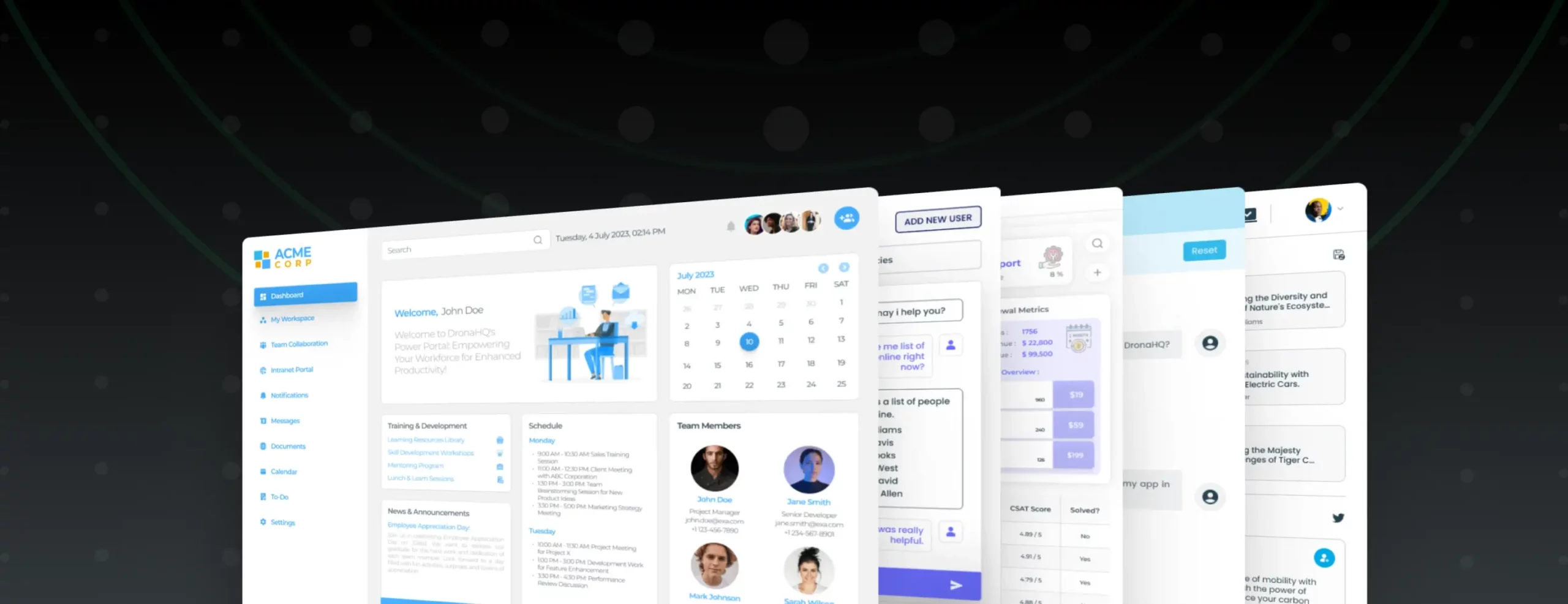

Shadow IT: A key driving force in digital transformation
A recent Gartner study discovered that somewhere between 30 and 40% of IT spending in large enterprises goes to shadow IT. Employees are taking matters into their own hands. Imagine an HR employee in today’s work-from-home scenario. She is trying to pull up the attendance and timesheet information submitted by the employees to make her end-of-the-month reports and payroll. Exporting Timesheet details to the Payroll every time just won’t cut it!
The HR manager heads over to the IT department and asks what her options are and sure enough, the IT team can whip up an automation tool but they already have projects up to their necks. So, this HR manager will find herself going to the internet to look for ready or easy to use solutions. While we all want to use IT approved tools and technology to avoid any mishaps, today’s technology-savvy is more likely to take matters to their own hands than wait around for the IT.
Another way Shadow IT finds its way into businesses is because employees prefer tools that resemble the consumer applications, they are fond of. This is why we are seeing the likes of WhatsApp picking up rapidly in the workspace – Slack, Team, Workplace, and so on.
Why is it called Shadow IT?
Employees using applications without the official consent or knowledge of the company’s IT teams is commonly called Shadow IT.
It is a full-time job to be aware of the regulations, requirements, and constraints. Keeping the organizational information safe and secure from data breaches is a key responsibility of the IT department. So, whether you are a large enterprise or a smaller business, your IT team needs to keep a stringent check on every application or digital service that finds its way into the organization.
But Shadow IT may not be the only cause for data breach or hacks. It is, in fact, often the result of the negligence or the inability of the IT team to meet the employee’s need due to low bandwidth. This leaves Shadow IT vulnerable to exploitation.
Controlling Shadow IT
The employees may or may not understand the price Shadow IT comes with. All they want is to get the job done as opposed to waiting for the IT to do it for them. A quick snapshot of the Why –
- Your organization doesn’t have enough developers
- IT does not have enough time
- Easy access to data and ready tools
- A tech-savvy workforce that is ready to DIY than wait on the IT
An ideal scenario would be to have an IT team that meets each and every requirement of the business. But that would still not guarantee satisfaction or the desired functionality.
In reality, it is too late to get into the depths of Shadow IT and kill it off. However, managed Shadow IT allows room for innovation and regulatory control to take place simultaneously.
Embrace low-code, embrace Shadow IT
Forrester, on speaking on The Future of IT, stated that how an organization utilizes technology speaks a lot about its success. To bring about this utilization to its highest potential, success-driven organization are bound to fade out the business-it gap. The evolving needs of customers and employees demand IT to “take a larger role in the business and ensure that technology creates new capabilities that shape and guide a firm’s strategy and operations.”
Low-code is just the technology that gets you future-ready. It is something that the IT teams can readily vet for the organizations and both the business users and developers can then use to ramp up solution development. By giving some power to the business users who need tools that are right for their LOB operations, as a CIO you open the floor for more creative execution.
An enterprise-class Low-code platform brings app development and deployment process from 6 months down to less than 1 week. By allowing the developers to quickly build trusted apps for the business, the chances of the employees looking for solutions outside can be brought down.
As the workplace copes with the uncertainties brought on by the pandemic, options like low-code given into the hands of the business users, like our HR managers in the story above, can help organizations set up new processes quickly. By embracing low-code, the agile practices supported by the platforms can help off-load the IT as well. As for the developers, low-code shortens the development time from months to weeks.
Along with battle-tested security features, granular access control & permission, user management and ease of deployment, a no-code solution also allows for scalable and economical management of applications. So, as the organization grows, your apps can be scaled without adding to the plate of the IT teams.
Managed Shadow IT with No-code and Citizen Developers, Business Developers
A well-vetted low-code technology platform can take you months ahead into your project timelines by giving these tools into the hands of the citizen developers.
With a well-defined scope and room for iterative development, you are giving the citizen developers the freedom to get hands-on, build, test, iterate before putting anything into production.
A low-code platform that can be used by the professional developers, as well as the citizen or the business developers, gives you that exponential increase in productivity.
What cannot be tackled by force, can be resolved by hiring more developers or by judiciously adopting accelerating Low-code tools. The business developers can make their own tools now if they do not get the tools from IT. The business teams will have the required tools and the IT will be able to maintain security standards and avoid discrepancies.
Turn Shadow IT into an opportunity for your organization by handing the reins to the best fit maker letting them build the solution they need with clearly defined guidelines and thorough testing. You will soon begin to realize innovative solution development picking up pace in your organization.
Originally published at https://www.dqindia.com/.




